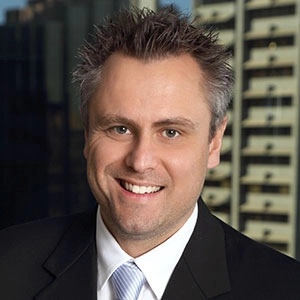No clear link between high fees, active share and outperformance
Nearly one in five managed funds in Europe fail to beat their benchmarks despite charging high fees, but the reasons are more nuanced than you might expect.
Nearly one in five managed funds in Europe fail to beat their benchmarks despite charging high fees, but the reasons are more nuanced than you might expect.
In a three-year study, Italian research consultancy Prometeia, examined 2500 European equity, bond and money market funds. It found only 18 per cent beat their respective benchmarks over the period. "Many managers are unable to compensate for fees because they are not taking enough active risk, so they are very unlikely to beat their benchmark. This is a structural problem," the firm's head of asset management advisory, Claudio Bocci, told Financial Times last week.
Morningstar addresses the same issue within various studies of managed funds - or mutual funds, as they are known in some markets. "The median Australian share manager struggled over the month of March, with a return of negative 3.4 per cent. This was marginally ahead of the S&P/ASX 300 Index's return of negative 3.7 per cent," finds Peter Gee in April's Morningstar Institutional Sector Survey.
The longer-term metrics are more useful: annualised returns from the median manager were 5.1 per cent, 5.4 per cent, 9.1 per cent and 6.9 per cent over the trailing one year, three-year, five year and 10-year.
Fund fees and active share
Morningstar also addresses the topic from a slightly different angle in its Australian Equities Sector Wrap. In the February edition, it assesses the increasing "activeness" of actively managed funds – among other things. "Across the 75 active large-cap strategies we cover, roughly 60 have increased their active share, against the S&P/ASX 200, since late 2014 to late 2017," writes Morningstar director of manager research, Chris Douglas.
He cites two key reasons for this: a need for fund managers to justify their existence and costs in the face of intensifying competition from passive strategies; and a herd mentality whereby funds gravitate closer to the benchmark during higher periods of volatility.
Regarding the first point, Douglas says: "Many members of the active brigade believe a rising active share is one way to demonstrate differentiation and value for money".
On the second point, he says fund managers "often exhibit the same herd mentality as amateur investors. So, when markets have an uncertain outlook … many fund managers move closer to the benchmark".
Interestingly, Morningstar's analysis doesn't find a high correlation between high active share and outperformance. "A high active share doesn’t necessarily lead to outperformance, nor does a modest active share preclude it. To that end, some of our favourite managers have delivered excellent net-of-fee returns with active shares scores of approximately 40 per cent.
As examples, he points to Fidelity Australian Equities (12292), Greencape Broadcap (14654) and Greencape High Conviction (14653) - the last two having used their 40 per cent to 50 per cent active share to beat the index by over 3 percentage points (annualised) since inception in October 2006.
By contrast, Douglas notes Hyperion and Bennelong Australian Equities 16998 "are two strategies we hold in very high regard, that operate with relatively high levels of activeness".
Do investors understand the difference?
Morningstar US columnist Jon Rekenthaler provides yet another perspective. He refers to an inquiry into fund fees conducted by the New York attorney-general's office, which he quotes directly: "Investors who choose to buy actively managed funds are choosing to pay more than they would for index funds, and therefore should seek to understand what additional value they may obtain in exchange for higher fees".
Rekenthaler points to figures that show that among US mutual funds, 1.18 per cent is the average expense of a high active share fund, compared to 0.91 per cent for the low active share equivalent.
"For the New York attorney-general, those figures indicate that the fund industry takes portfolio-manager activity into account when pricing its offerings.
"I suspect that the bigger factor is that firms with high active share scores tend to be small-company specialists, and small-cap funds typically sport large price tags," he says.
More from Morningstar
• Make better investment decisions with Morningstar Premium | Free 4-week trial
Glenn Freeman is senior editor, Morningstar Australia.
© 2018 Morningstar, Inc. All rights reserved. Neither Morningstar, its affiliates, nor the content providers guarantee the data or content contained herein to be accurate, complete or timely nor will they have any liability for its use or distribution. This information is to be used for personal, non-commercial purposes only. No reproduction is permitted without the prior written consent of Morningstar. Any general advice or 'class service' have been prepared by Morningstar Australasia Pty Ltd (ABN: 95 090 665 544, AFSL: 240892), or its Authorised Representatives, and/or Morningstar Research Ltd, subsidiaries of Morningstar, Inc, without reference to your objectives, financial situation or needs. Please refer to our Financial Services Guide (FSG) for more information at www.morningstar.com.au/s/fsg.pdf. Our publications, ratings and products should be viewed as an additional investment resource, not as your sole source of information. Past performance does not necessarily indicate a financial product's future performance. To obtain advice tailored to your situation, contact a licensed financial adviser. Some material is copyright and published under licence from ASX Operations Pty Ltd ACN 004 523 782 ("ASXO"). The article is current as at date of publication.


